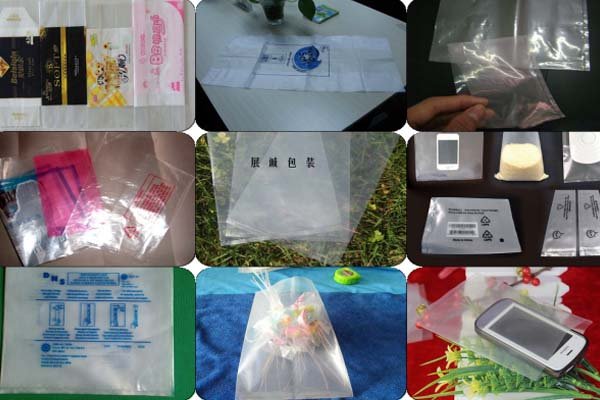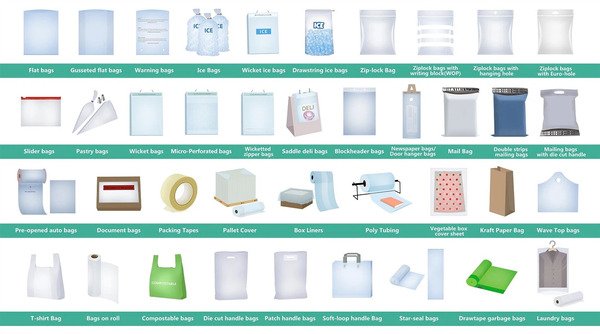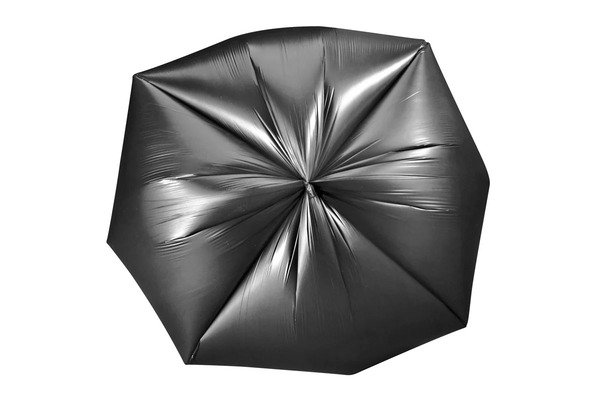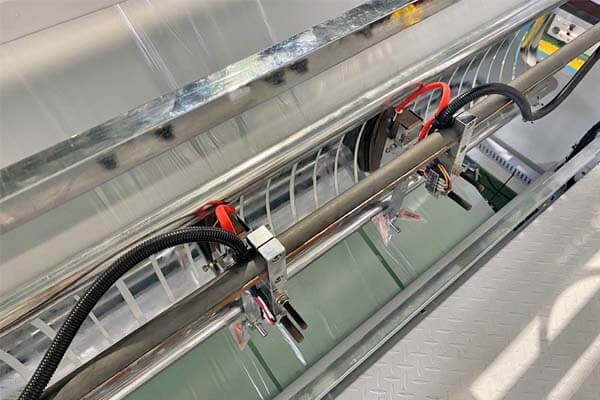
Slitting is a manufacturing process in which a large master roll of material is cut into narrower rolls using sharp blades. This step ensures consistent, uniform material widths, which are essential for producing high-quality bags.
In bag production, slitting typically occurs before the forming and sealing stages. The process begins with unwinding a master roll—commonly plastic film1 or nonwoven fabric2—followed by cutting the material into precise strips using positioned blades. The strips are then rewound onto separate cores. This stage is crucial for maintaining accuracy and reducing waste, whether producing simple T-shirt bags or more complex laminated pouches.
For example, a wide roll of plastic film can be slit into exact widths required for making specific types of bags. Machines may feature integrated slitting systems or operate as standalone units. Slitting systems can handle various materials, including LDPE, HDPE, and biodegradable PLA films, with precision and control.
How Slitting Works in Plastic Film & Nonwoven Fabric Processing
The slitting process involves feeding a wide roll of material through positioned blades under controlled tension. The material is cut into narrower strips and rewound for subsequent forming and sealing.
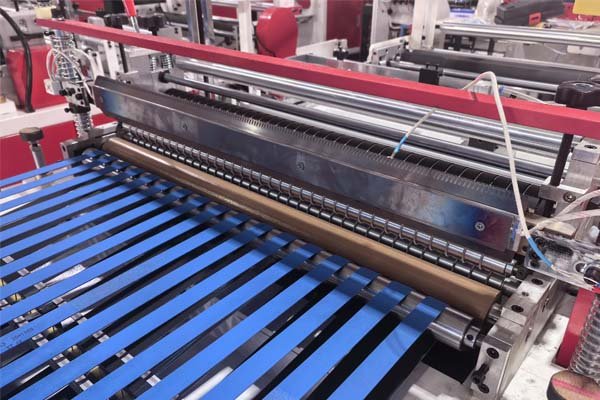
Core Stages of Slitting
1. Unwind Station
The process begins with loading the master roll. Tension control is critical—loose tension can cause wrinkling or wandering, while excessive tension can cause stretching or tearing. Advanced systems can automatically adjust tension throughout the run.
2. Cutting Section
Here, the material passes through blades suited to the material type and thickness. Razor slitting is often used for thin films, while shear slitting suits thicker or laminated materials.
3. Rewind Station
Cut strips are rewound onto new cores. Controlled tension ensures rolls are wound evenly, preventing defects like telescoping or starring.
Material-Specific Considerations
| Material Type | Common Challenge | Solution Example |
|---|---|---|
| LDPE/HDPE Film | Stretching, static | Tension control, anti-static systems |
| Laminated Films | Layer separation | Precision shear slitting with hardened blades |
| Nonwoven Fabric | Fraying, dust generation | Shear cutting with dust collection |
| Biodegradable PLA | Brittleness, heat sensitivity | Razor slitting with optimized blade angles and speeds |
Why Slitting Is Essential for Quality Bag Production
In-house slitting ensures dimensional accuracy, consistent quality, and greater production flexibility. It allows the use of cost-effective master rolls for different bag sizes.
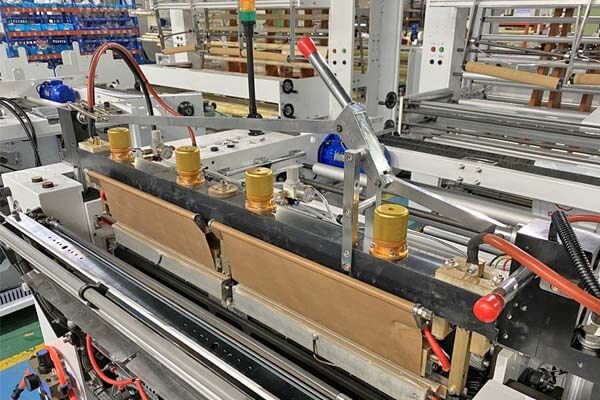
Quality Factors Dependent on Slitting
1. Dimensional Consistency
Accurate slitting maintains uniform bag dimensions, essential for print alignment and overall product appearance.
2. Superior Edge Quality
Clean edges improve sealing strength and reduce contamination risks, especially in food or medical packaging.
3. Cost-Effectiveness and Flexibility
Large master rolls are more economical, and adjustable slitting setups allow quick changes between product sizes.
Impact on Downstream Processes
| Production Stage | Good Slitting Outcome | Poor Slitting Outcome |
|---|---|---|
| Printing | Correct logo/text alignment | Misregistered prints |
| Sealing | Strong, consistent seals | Weak seals, leaks |
| Handle Attachment | Correct placement | Off-center or weak handles |
| Packing | Uniform stacks | Packing difficulties |
Main Types of Slitting Methods in Bag Making
Three primary methods are used, depending on the material and application:
1. Razor Slitting
Uses razor blades for cutting.
- Best for: Thin, non-abrasive films.
- Pros: Low cost, quick setup, clean cuts.
- Cons: Unsuitable for thick or abrasive films.
2. Shear Slitting
Uses overlapping rotary knives, similar to scissors.
- Best for: A wide range of materials, including laminates.
- Pros: Precise, clean edges, minimal dust.
- Cons: Higher setup cost and complexity.
3. Score Cutting
Uses a blunt knife against a steel roller.
- Best for: Heavier, rigid materials.
- Pros: Simple setup, handles thickness variations.
- Cons: Creates dust, rougher edges.
| Feature | Razor Slitting | Shear Slitting | Score Cutting |
|---|---|---|---|
| Cut Quality | Good–Excellent | Excellent | Fair–Good |
| Best For | Thin bags | High-quality pouches | Industrial bags |
| Dust Generation | Low | Very Low | High |
| Setup Cost | Low | High | Medium |
Key Factors When Choosing a Slitting Unit
Important considerations include material compatibility, precision requirements, production speed, automation level, ease of maintenance, and supplier support.
Technical Specifications
- Material Compatibility – Ensure the machine can handle all intended materials.
- Slit Width Range & Tolerance – Match precision needs, such as ±0.1mm for high-end packaging.
- Speed & Automation – Match output to bag machine speed; consider automation features.
Operational Considerations
- Safety & Maintenance – Look for safety guards, emergency stops, and accessible blade changes.
- Supplier Reliability – Evaluate technical support and after-sales service options.
Common Slitting Problems and Solutions
Problem 1: Telescoping Rolls
- Cause: Uneven winding.
- Solution: Independent rewind tension control and precise alignment.
Problem 2: Blade Wear and Jagged Edges
- Cause: Dull or unsuitable blades.
- Solution: Use material-appropriate blades and enable quick changes.
Problem 3: Inconsistent Slit Width
- Cause: Material wandering, unstable knife holders.
- Solution: Stable frame design, secure knife locking, and precise tension control.
Enhancing Bag Production with Integrated Slitting Solutions
Integrated slitting units can be customized for different methods, automation levels, and production speeds. Systems may include energy-saving drives, IoT-enabled diagnostics, and support for sustainable materials.
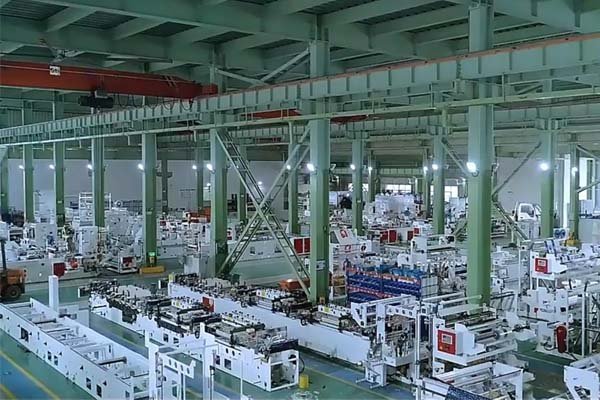
Key Advantages
- Customization – Tailored slitting setups for specific bag types.
- Efficiency – Reduced waste and power consumption.
- Future-Readiness – Compatibility with recycled and biodegradable materials.
Conclusion
Slitting is a critical stage in bag manufacturing, affecting product quality, efficiency, and flexibility. Selecting the appropriate slitting method and equipment, with attention to precision, tension control, and reliability, ensures consistent output and optimized production.


